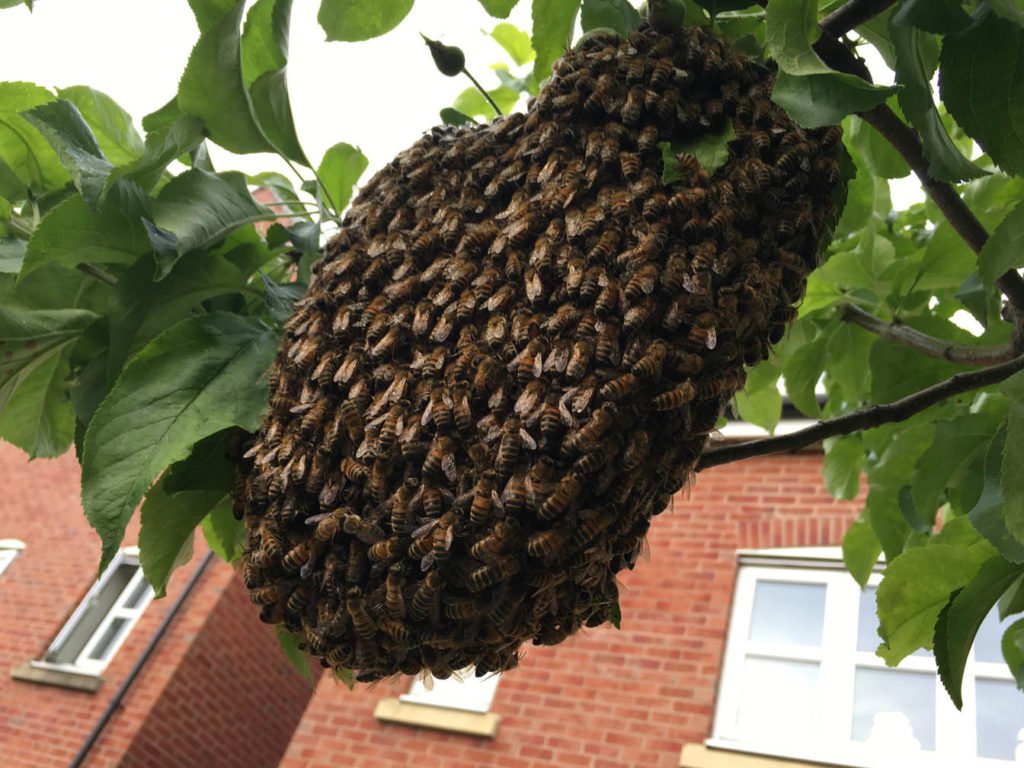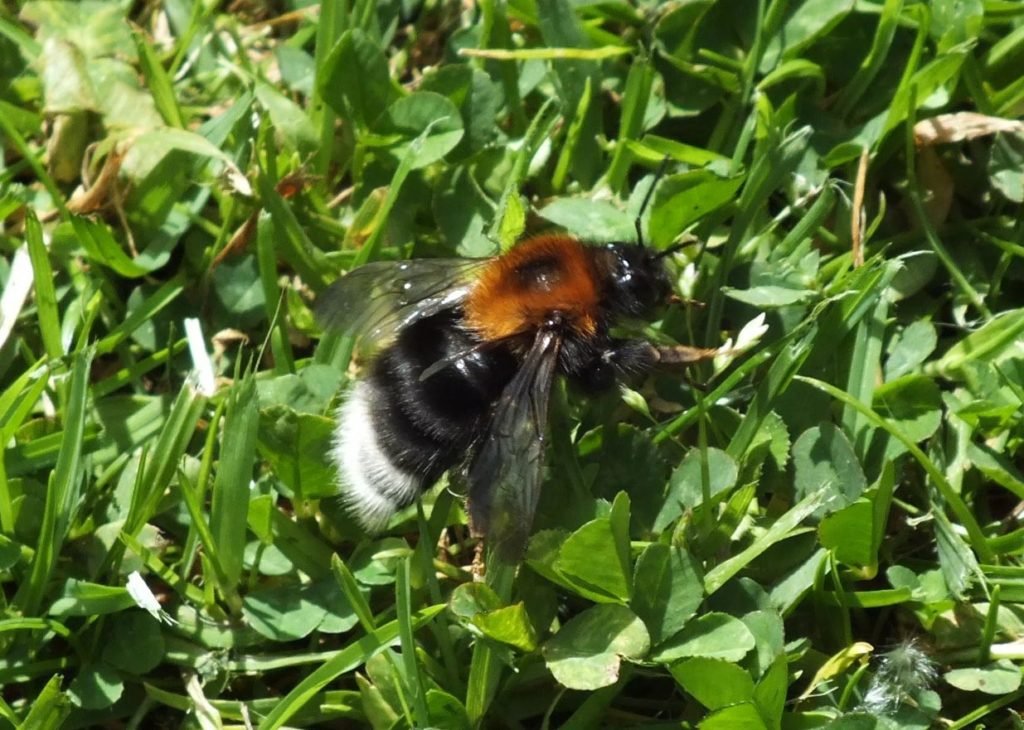Swarms
Only honeybees form swarms. Beekeepers are often approached about winged, flying creatures, especially in the spring and summer period, when they are their most active simply working and are no cause for alarm.
Cheshire Beekeepers are ONLY able to help with Honey Bee Swarms
Above is a video of a Honey Bee Swarm in flight. It can look and sound quite frightening but the bees are focused on finding their queen and then on finding a new home.
If you see a swarm like this keep your distance, go indoors, close windows and doors. Watch the swarm settle, it’s fascinating. Then call a beekeeper to come and collect them.
You can find a beekeeper to collect a swarm by visiting our Swarm Collection page.
A Settled Swarm
This is a more typical view of a swarm settled in a tree.

However, swarms can settle almost anywhere, on posts, in hedges, drainpipes and even on parked cars,
How can I be sure it is a Honey Bee?
Below is a picture of a Honey Bee and a Bumble Bee sharing a flower.

The larger Bumble Bee is the stereotypical “Bee” that a child may draw. This is in contrast to the smaller and sleeker Honey Bee.
The British Beekeepers Website also has some useful images and videos that may help you.
Tree Bumblebees

The Tree Bumblebee is a relatively new foreign species which has become very common in the UK and their nests are on the increase.
Here in Cheshire our swarm collectors receive hundreds of calls each year reporting these bees as swarms.
These are NOT swarms, they are nests and our swarm collectors only deal with Honey Bee swarms.
These bees typically nest in the eaves of houses and bird boxes.
They are easily recognised as there are usually between 5 and 20 bees flying outside the nest all day, on warm sunny days.
The nests are established in early spring but flying males appear later in the spring and summer. The nests die out naturally in the late summer and autumn.
If the nest is in the eaves it is not likely to cause any problems as the bees flying round the entrance are all male and do not have a sting.
When they are nesting in a bird box, high up or away from people passing by, again they should not be a cause for concern.
If they are near to head height or near children or animals, constant movement outside the entrance could promote a defensive response and may result in stinging. In this case you should contact your local council or a pest controller to either move the box or, if absolutely necessary, exterminate the bees.
More information on Tree Bumblebees can be found here:
Our grateful thanks go to Clive Hill the author of Introducing the Tree Bumblebee, for allowing us to post his PDF on our website.
